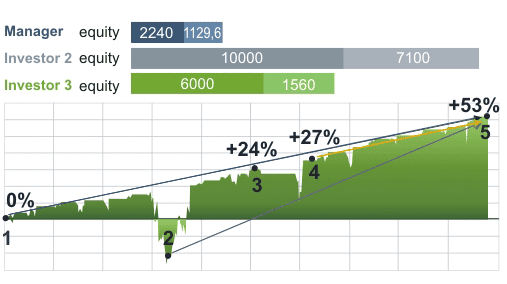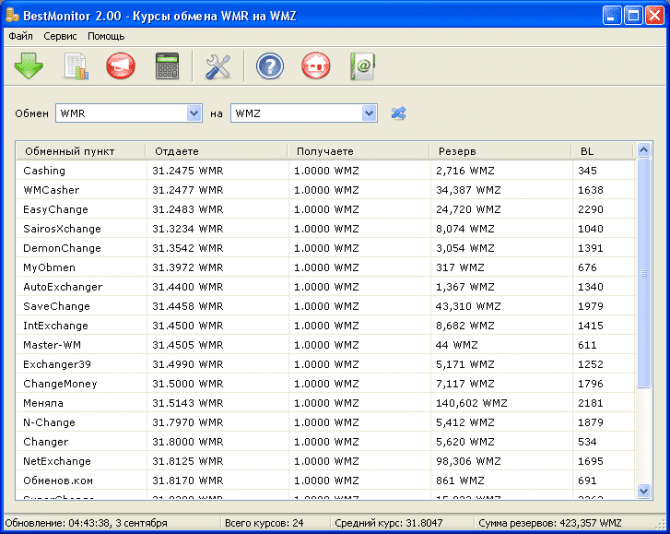Accounting Exam 2 Flashcards
Content
Unearned revenues represent the cash proceeds from the clients for which the services will be provided in the future. Here is an example of a journal entry you would create when you make a sale .
This means that it acts in the opposite manner of a regular asset account. If your business owns stocks in other companies, you will receive dividend payments.
The allowance method of accounting allows a company to estimate what amount is reasonable to book into the contra account. This type of account could be called the allowance for doubtful accounts or bad debt reserve. The balance in the allowance for doubtful accounts represents the dollar amount of the current accounts receivable balance that is expected to be uncollectible. The amount is reported on the balance sheet in the asset section immediately below accounts receivable. The net of these two figures is typically reported on a third line.
Contra Account Definition
Contra accounts are also often referred to as adjustments or adjusting accounts. A contra revenue account is an account with debit balance. It shows deductions from the revenue of a company, which results in net revenue. Examples of contra equity accounts include treasury stock accounts and drawing accounts. Treasury stock shows the amount spent by a business for repurchasing a company’s shares from investors. The company may take buyback decisions if it thinks the stock is undervalued in the open market or it decides to pay dividends to shareholders.
Other income includes all revenues generated by a company outside of its normal operations. Usually non-operating revenues are only a fraction of operating revenues. Rental income is earned by a landlord for allowing tenants to reside in his or her building or land. The tenants often have to sign a rental contract that dictates the details of the rental payments. According to the accrual method of accounting, the landlord records rental income when it is earned – not paid. Although a bond discount is a contra liability account, it cannot be considered as a liability since no future obligation can be expected from it.
If you own a landscaping company, your business’s operating revenue is derived from your services. Or, if you own a pie shop, your business’s operating revenue comes from selling the pies. Losses are decreases in equity from transactions and other events and circumstances affecting an entity except those that result from expenses or distributions to owners . In practice, changes in the market value of assets or liabilities are recognized as losses while, for example, interest or charitable contributions are recognized as other expenses. Gains are increases in equity from transactions and other events and circumstances affecting an entity except those that result from revenues or investments by owners .
Do We Need A Contra Revenue Account Why?
Profit shows you the amount your business gains or loses after you deduct expenses. To calculate your profit, or net income/loss, you must use your business’s revenue as a starting point. To find your profit, subtract your total expenses from your total revenue. The terms equity or net assets [not-for-profit enterprise] represent the residual interest in the assets of an entity that remains after deducting its liabilities .
- This type of account could be called the allowance for doubtful accounts or bad debt reserve.
- Many cars are sold on credit or account sale which means that the car payments will be made over time.
- Discount on notes receivable refers to a contra asset account that occurs when the current value of a note receivable amounts to less than the face value of the note.
- Accounts receivable is rarely reported on the balance sheet at its net amount.
- If you have buildings or equipment that you rent out on the side, you need to make a Rent Revenue account.
- The sales allowances account contains either an allowance for reductions in the price of a product that has minor defects, or the actual amount of the allowance attributable to specific sales.
It’s a classification scheme that enables aggregation of individual financial transactions into coherent, and hopefully informative, financial statements. Revenues are inflows or other enhancements of assets of an entity or settlements of its liabilities from delivering or producing goods, rendering services, or carrying out other activities .
Is Unearned Revenue An Asset Or Liability?
The company will have to maintain separate manpower for such accounting. Peggy James is a CPA with over 9 years of experience in accounting and finance, including corporate, nonprofit, and personal finance environments. She most recently worked at Duke University and is the owner https://business-accounting.net/ of Peggy James, CPA, PLLC, serving small businesses, nonprofits, solopreneurs, freelancers, and individuals. For freelancers and SMEs in the UK & Ireland, Debitoor adheres to all UK & Irish invoicing and accounting requirements and is approved by UK & Irish accountants.
On the balance sheet, the allowance for doubtful accounts can reduce the totals in the business’s accounts receivable. So, if the company reported receivables amounting to $100,000, the estimated 5% default rate would reduce the number of accounts receivable by $5,000. Discount on notes receivable refers to a contra asset account that occurs when the current value of a note receivable amounts to less than the face value of the note. The resulting credit balances in these types of accounts may typically be amortized as interest revenue over the course of the note’s viable lifetime. A company might use a combination of different types of asset accounts, and the following six types of contra asset accounts can be used in conjunction with these fixed and current asset accounts. This type of account can equalize balances in the asset account that it is paired with on a business’s balance sheet. The contra asset account has credited balances that can reduce the balance in its paired asset account.
In the above case, the company should minus the sales return/allowance/discount from gross sales. Many cars are sold on credit or account sale which means that the car payments will be made over time. Car sales are typically under warranty for a set period of time and can be returned as a return on sales later on. Sales discounts – Normal discounts given to the customers are recorded separately because of special circumstances. Normal discounts usually consist of a marketing strategy, when a customer purchases a large volume of product, or if a customer wants to make early payments on the product. Trade accounts receivable – Trade receivables are the amount owed by customers that have been billed but payment has not been made yet. For example, you invested money into a business and earn interest on it.
Harold Averkamp has worked as a university accounting instructor, accountant, and consultant for more than 25 years. He is the sole author of all the materials on AccountingCoach.com.
Contra Equity And Contra Revenue
These contras reduce the equity account and carry a debit balance. Contra equity reduces the total number of outstanding shares on the balance sheet. The key example of a contra equity account is Treasury stock, which represents the amount paid to buyback contra revenue account examples stock. Contra revenue accounts appear near the top of the income statement, as a deduction from gross revenue. If the amounts of these line items are minimal, they may be aggregated for reporting purposes into a single contra revenue line item.
Power Manufacturers, Inc. purchases new machinery for a total of $300,000. The company projects that the equipment will be usable for six years, and it subtracts a 16% yearly depreciation rate from the initial value to calculate the amount of depreciation over the next six years. Therefore, the depreciation of the equipment increases by approximately $50,000 for each year of use.
This will be shown using a contra account called an accumulated depreciation account. Without this account, the user may not know about the adjustments made to the value of machinery. On the income statement, net income is computed by deducting all expenses from all revenues.
What Is A Contra Account & Why Is It Important?
The first step in identifying such problems is to carefully monitor sales returns and allowances in a separate, contra‐revenue account. The sale on account definition is when a business allows customers to make payments on a product at a later time. Sale on account is also known as sale on credit because the business is giving the customer a product but expecting money on a set date. On the sale on account’s attached contra asset account, this will be recorded as accounts receivable.
This type of contra asset account may generally be debited expenses, followed by a credit to the company’s contra asset account for recording unusable inventory. Similarly, a business may also write off these types of expenses from its financial records if the inventory has been completely phased out. The contra asset account can also be combined with a current inventory account, allowing a financial analyst to determine the current market value of the company’s inventory. This amount is typically paired with the company’s current assets on the balance sheet. When a company evaluates its financial position, a financial analyst might calculate the total amounts that the company stores in its asset accounts. While financial information on these accounts might include receivables collected, the company can also choose to include its contra asset accounts as a separate line item on the balance sheet. The same is true for other asset accounts like accounts receivable.
Maintaining a contra account is important as it provides more clarity on the dealings of a company. It clearly shows how the balances are offset and helps in establishing the matching principle. Contra accounts help the user of the financial statement to get clear information, which helps in making the statement more understandable. Accumulated depreciation is the total of all depreciation that has been charged to existing fixed assets such as equipment and buildings. There can be hidden value in stocks that have a lot of fully depreciated buildings. Companies like to depreciate assets as quickly as possible to get the tax savings, so the balance sheet may not state the true value of fixed assets. If you’re valuing a low-growth company based on its equipment assets, you want to use the net value to be conservative.
It would appear on the company’s income statement in the revenue section. Contra revenue transactions are recorded in contra revenue accounts that typically reflect a debit instead of a credit. The most common contra revenue accounts are for sales allowances, discounts, and returns. Market development funds provided to solution provider partners are one example of contra revenue for vendors. The two common contra liability accounts, discount on bonds payable and discount on notes payable, carry normal debit balances. The discount on bonds payable represents the difference between the amount of cash a company receives when issuing a bond and the value of the bond at maturity.
For example, a company has provided services to its customer for $10,000 with a sales discount of 2%. Therefore, the allowance for bad debts is $750 (5% of $15,000). Sales Returns – Amount that is reduced from the gross revenue for goods that have been previously sold but returned to the seller. Contra Accounts help show the net value of an account in the financial statements. For instance, the balance of the equity account is $10,000, and the owner of the business withdraws $900 for personal use. Likewise, drawing means to withdraw money from the business for personal use. In other words, contra revenue is a deduction from gross revenue, which results in net revenue.
How To Record A Contra Account
In the above case, the company will bear a loss margin of $100, and the contra revenue amount is $100.00. Accumulated depreciation – This is the value of depreciated value shown on an asset over time. Depreciation is the loss of value for something through time and usage. Accumulated depreciation shows a reduced overall value for assets like buildings, machines, and vehicles.










